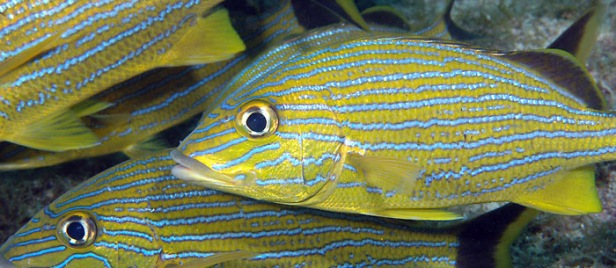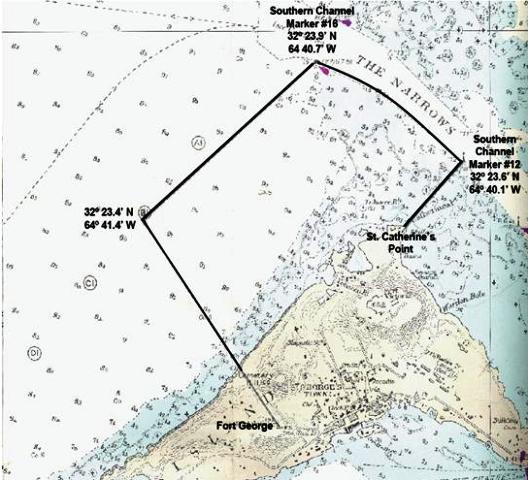North Shore Closed For Fishing For 2 Months
An area of North Shore will be closed to all fishing activities from May 1 to June 30. The area is a known “fish aggregation area” and is being closed for the conservation and protection of the Blue-striped grunt [Haemulon sciurus], in accordance with the Fisheries Act 1972.
The existence of a seasonal aggregation of blue-striped grunts in an area to the west of Fort St. Catherine has been known through fishermen’s anecdotes for many years. During the months of May and June, at certain phases of the moon, large numbers of these grunts, also known locally as bull grunts, were caught in this area by both commercial and recreational fishermen.
-

-
As many as 50 vessels were observed fishing at the site during peak fishing periods. Many of these were recreational vessels, so marine resources managers had no information about how many fish they were catching. Through inspections and interviews, it was ascertained that a vessel could easily catch 200 grunts or more in one evening of fishing. When an extrapolation is made based on the number of vessels fishing, the number of grunts which could potentially be removed in one night is considerable (i.e. 50 vessels X 200 grunts / vessel = 10,000 grunts).
In 2001, due to concerns about diminishing catches raised by those who had traditionally fished the site, Fisheries staff began a study of the aggregation. An initial sample of more than 100 fish was taken in just one day. Further samples were taken in 2002 and 2006. The sampling suggests that this is a spawning aggregation, as all of the specimens had well-developed gonads and a number of specimens were in spawning condition. Water temperature is rising in May, and this may be a key environmental factor that combines with the moon phase to prompt spawning.
Grunts are an important species in the food web of coral reef communities, as they eat worms and mollusks and are, in turn, eaten by larger predatory fish. It therefore seems prudent to protect this highly vulnerable spawning aggregation. Removing a large volume of spawning biomass at an aggregation may have serious ecological consequences and can result in a significant drop in reproductive output from the population.
A precautionary approach to managing the harvesting of this species indicates that a time/area closure at the site is the most effective means of affording protection when the grunts are most vulnerable.
The Fisheries Act allows the Minister to make an emergency closure of an aggregation site and, at present, this appears to be the most efficient means of affording protection at the site in the coming year.
The closed area being roughly rectangular in shape is enclosed by a line running in a north-easterly direction from St. Catherine’s Point, St. George’s to the Southern channel marker #12 (32 degrees 23.6 minutes North, 64 degrees 40.1 minutes West) thence by a line running along the southern boundary of the Southern channel to the Southern channel marker #16 (32 degrees 23.9 minutes North, 64 degrees 40.7 minutes West) thence by a line running in a south-westerly direction to a point 32 degrees 23.4 minutes North, 64 degrees 41.4 minutes West thence by a line running in a south-easterly direction to Fort George, St. George’s.
Below is a map of the area to be closed.
-

Read More About
Category: All, Environment, News

